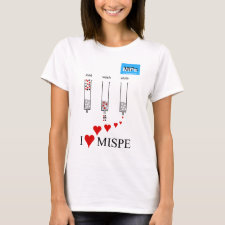
Authors: Serrano VM, Cardoso AR, Diniz M, Sales MGF
Article Title: In-situ production of Histamine-imprinted polymeric materials for electrochemical monitoring of fish.
Publication date: 2020
Journal: Sensors and Actuators B: Chemical
Volume: 311
Article Number: 127902.
DOI: 10.1016/j.snb.2020.127902
Alternative URL: https://www.sciencedirect.com/science/article/pii/S0925400520302495
Abstract: Histamine (HIS) is a major public health problem due to its toxic properties. High levels can cause a chronic toxicity as poisoning and can be used as a signal of food hygiene. Thus, a new electrochemical sensor for HIS detection in fish is presented herein, prepared by tailoring a molecularly imprinted polymer (MIP) sensing material on a gold screen-printed electrode (Au-SPEs), in which the polymeric film was generated in-situ. This film was obtained by electropolymerizing aniline under conditions that preserved the chemical structure of HIS. Raman spectroscopy followed the chemical changes occurring at each stage of the electrode modification. The device performance was assessed by evaluating the changes in electron transfer properties of a standard redox probe [Fe(CN)6]4-/[Fe(CN)6]3-, by cyclic voltammetry (CV) and electrochemical impedance spectroscopy (EIS). EIS was also used to calibrate the sensor, being the standard solutions prepared under different background media (electrolyte or a blank sample of fish extract). The device displayed a linear response from 500 nM to 1 mM, with a limit of detection of 210 nM, and a selective behaviour against tyramine, another amine related to fish degradation. The sensing system was further employed to monitor the HIS content in samples in different time points of storage at ambient temperature. The obtained results were in agreement with the ELISA method, while offering more reproducible data. In general, the optimized sensor allowed reproducible and accurate analysis of fish samples subject to degradation and was completely assembled in-situ, in a very simple and straightforward approach. The device is low cost and suitable for further adaptation to on-site analysis, as required in food control
Template and target information: histamine, HIS
Author keywords: molecularly imprinted polymer, electropolymerization, Screen-printed electrode, aniline, histamine, Fish



Join the Society for Molecular Imprinting

New items RSS feed
Sign-up for e-mail updates:
Choose between receiving an occasional newsletter or more frequent e-mail alerts.
Click here to go to the sign-up page.
Is your name elemental or peptidic? Enter your name and find out by clicking either of the buttons below!
Other products you may like:
 MIPdatabase
MIPdatabase









